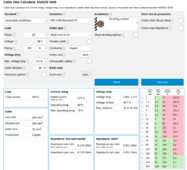mburke6
New Member
Hi, I'm new here and this is my first post. I've poked around a bit and haven't quite found an answer to a question I have. Mainly is there a such a thing as a 12kW grid-tied inverter that will take a high current 48Vdc input from a solar array?
I'm speculating about contemplating on building a 200' fence that will enclose an area in my back yard. The fence panels would be large bifacial modules mounted vertically and long-ways. I've found modules that are around 8' in length and nearly 4' in width and these would be mounted vertically between posts about 2 feet above the ground. There would be 22 panels in the fence and each panel is 48VoC and 17 short circuit amps.
I am hoping to get opinions and thoughts on wiring these panels in parallel to create two 48v, 6kW.
1. The primary power side of the panels will be facing in all four compass directions, depending on where it is located in the fence. I want the wiring side of the panels to be facing inside the enclosed area.
2. Every panel will be in sunlight 90% of the time, but every panel will experience some shading throughout the day.
3. The panels will be mounted low, so I'm worried about exceeding 48 volts for safety reasons.
4. Is there a 6kW to 12kW inverter out there that will accept a 40-48 volt input?
5. Is this fence just an all-around bad idea?
I've attached a sketch I made showing the fence.
I'm speculating about contemplating on building a 200' fence that will enclose an area in my back yard. The fence panels would be large bifacial modules mounted vertically and long-ways. I've found modules that are around 8' in length and nearly 4' in width and these would be mounted vertically between posts about 2 feet above the ground. There would be 22 panels in the fence and each panel is 48VoC and 17 short circuit amps.
I am hoping to get opinions and thoughts on wiring these panels in parallel to create two 48v, 6kW.
1. The primary power side of the panels will be facing in all four compass directions, depending on where it is located in the fence. I want the wiring side of the panels to be facing inside the enclosed area.
2. Every panel will be in sunlight 90% of the time, but every panel will experience some shading throughout the day.
3. The panels will be mounted low, so I'm worried about exceeding 48 volts for safety reasons.
4. Is there a 6kW to 12kW inverter out there that will accept a 40-48 volt input?
5. Is this fence just an all-around bad idea?
I've attached a sketch I made showing the fence.





